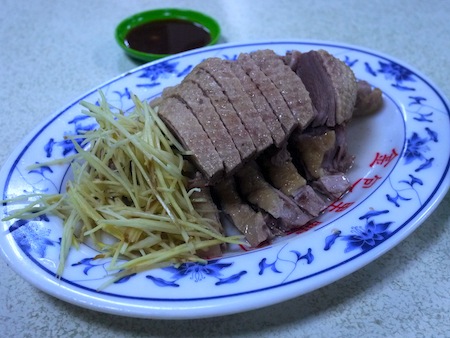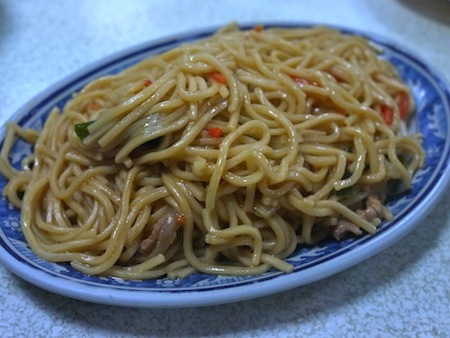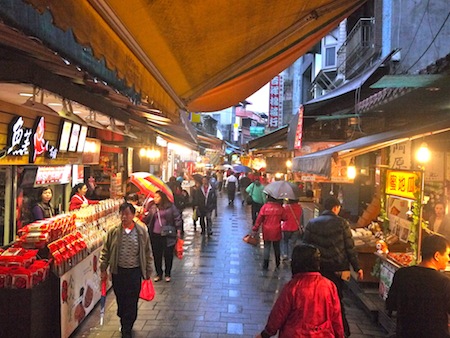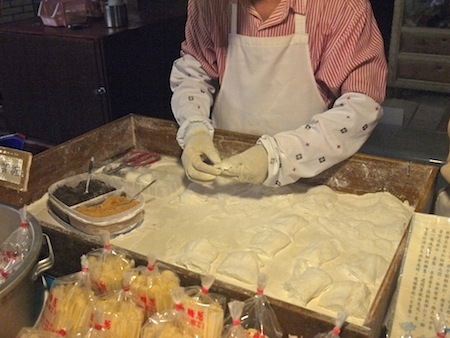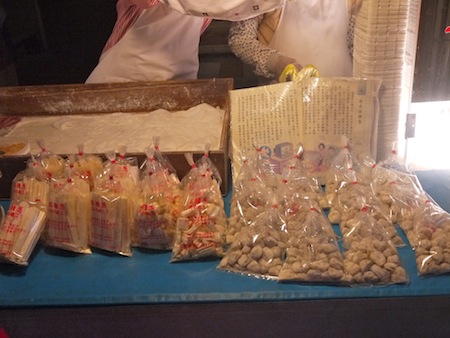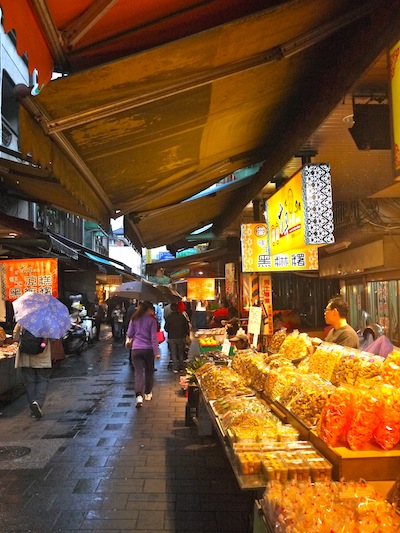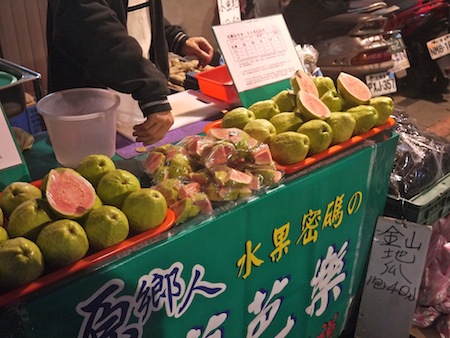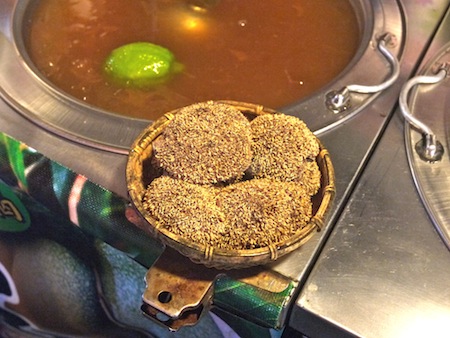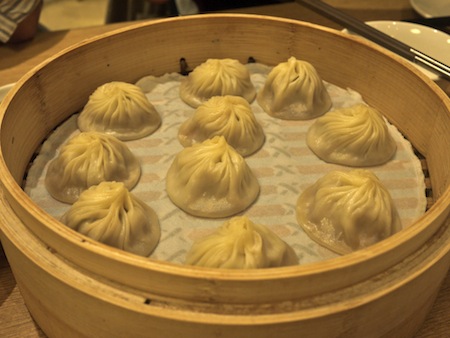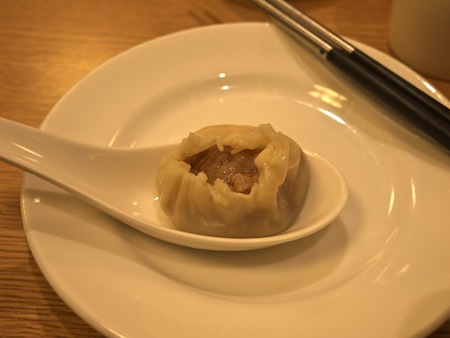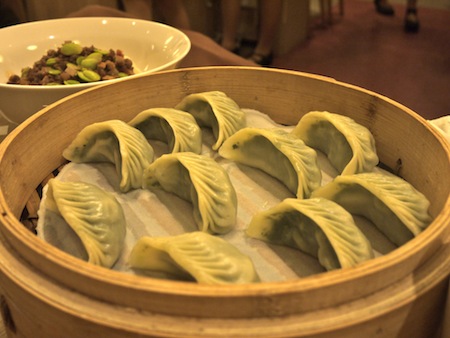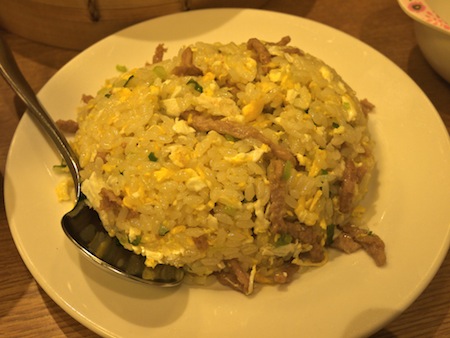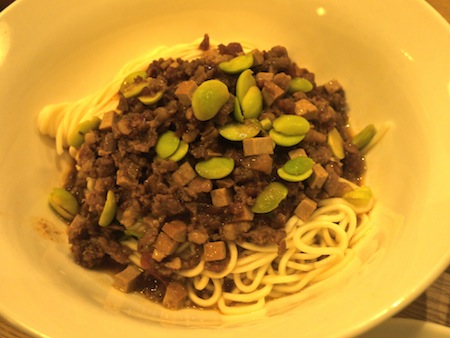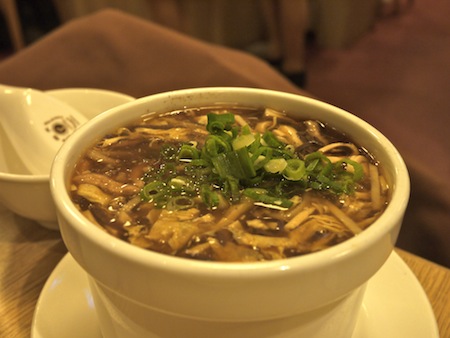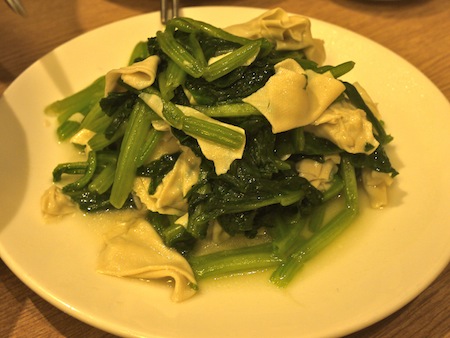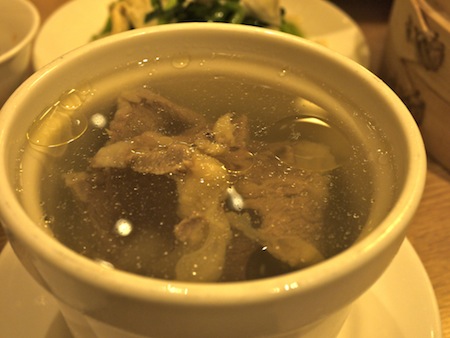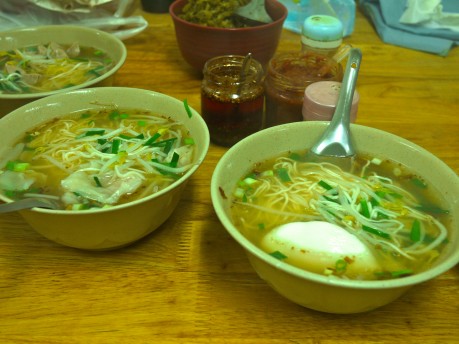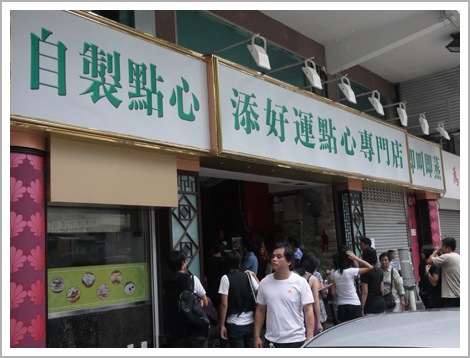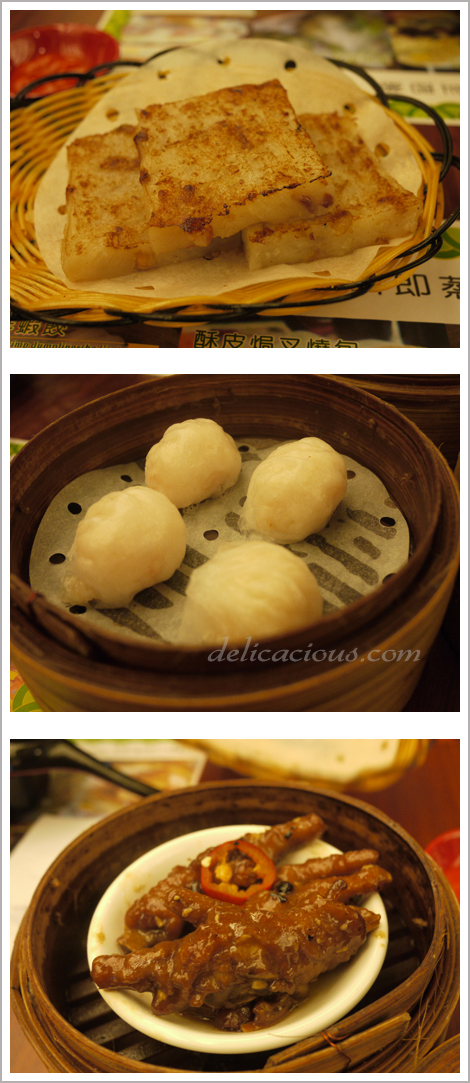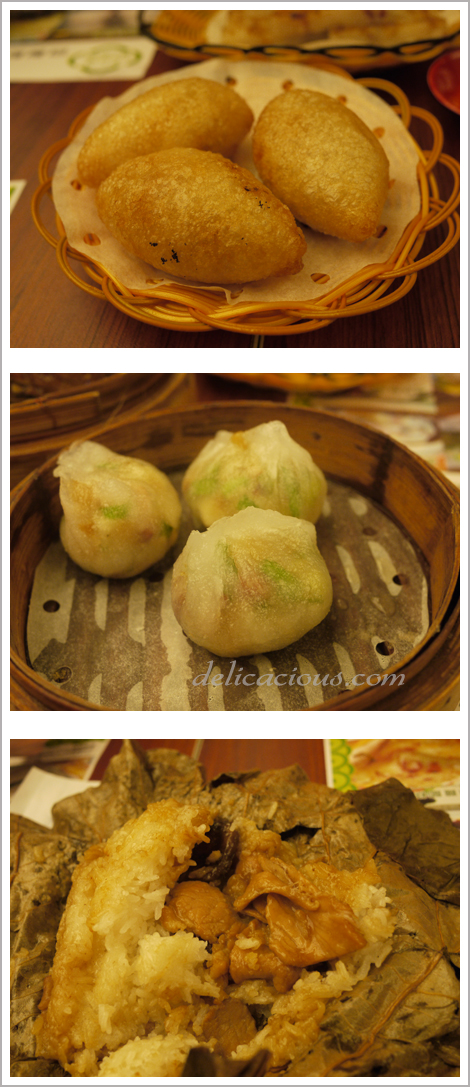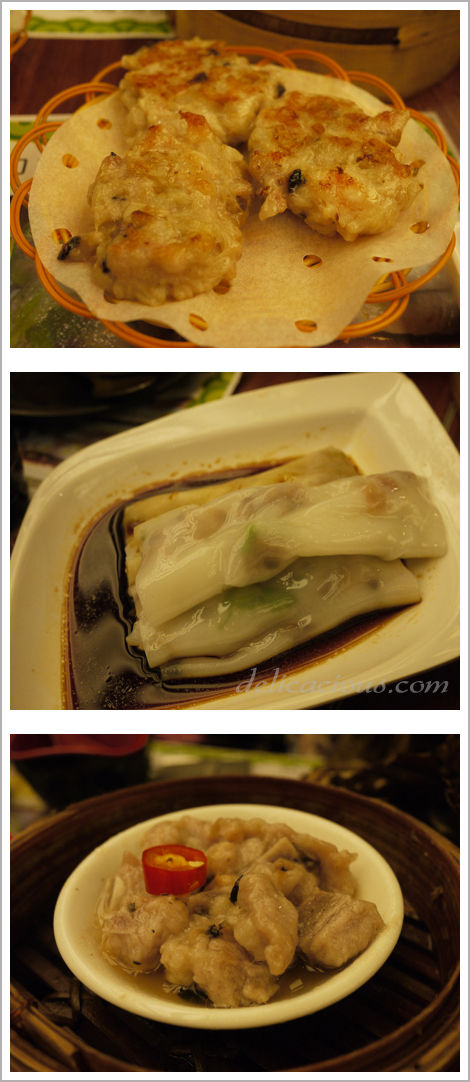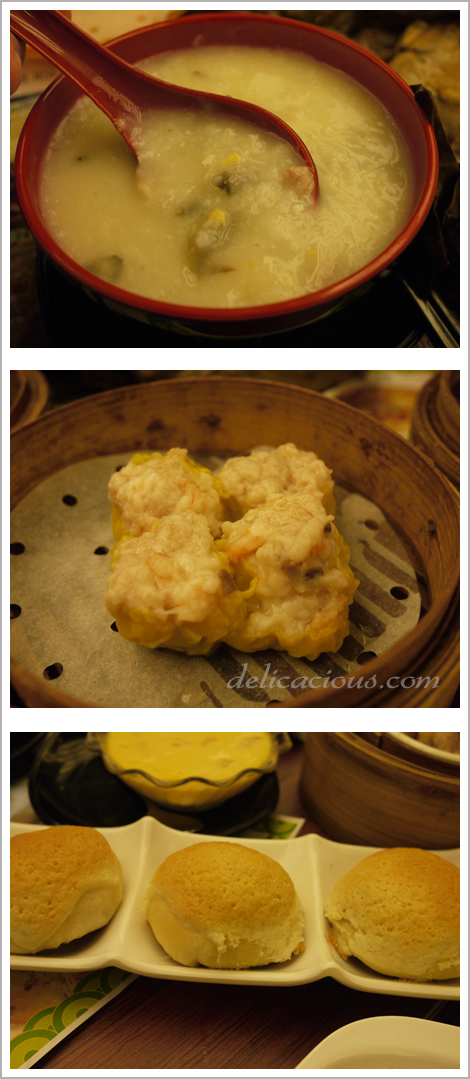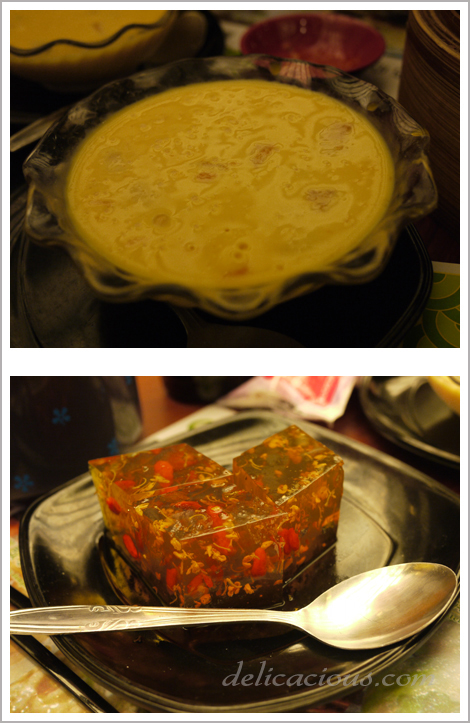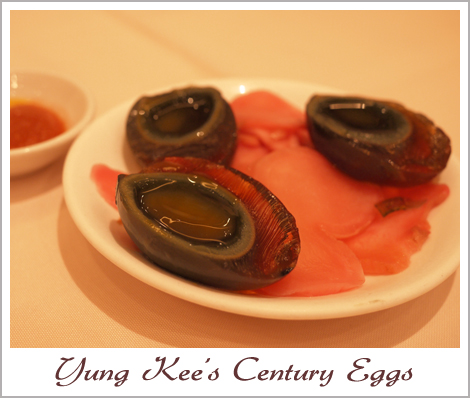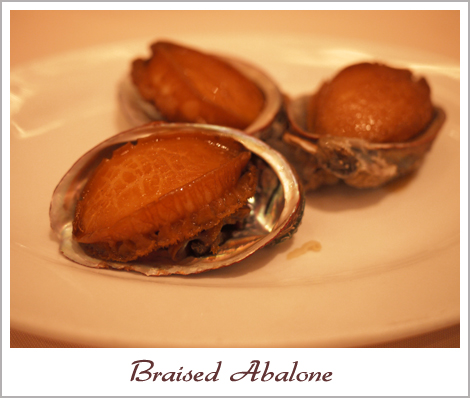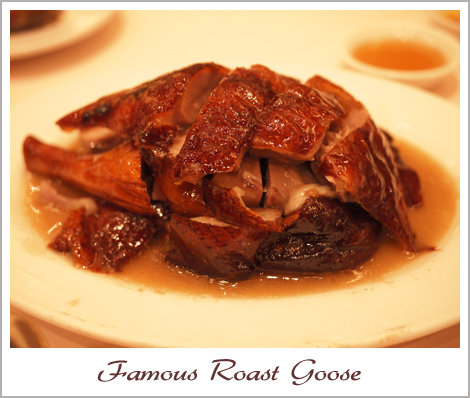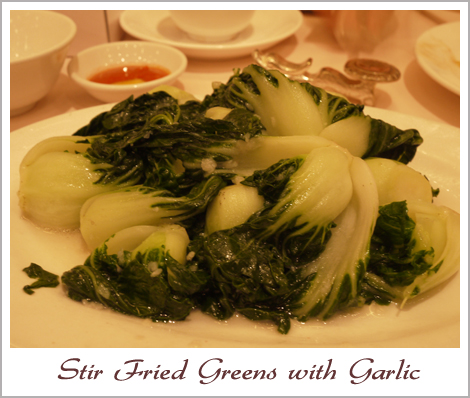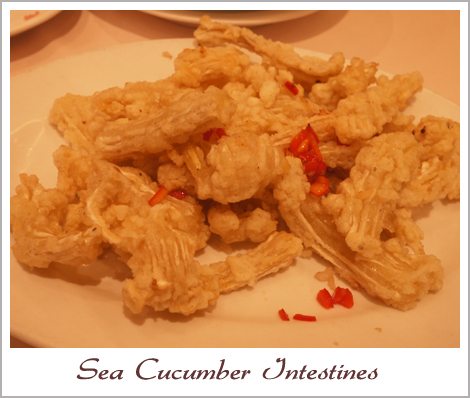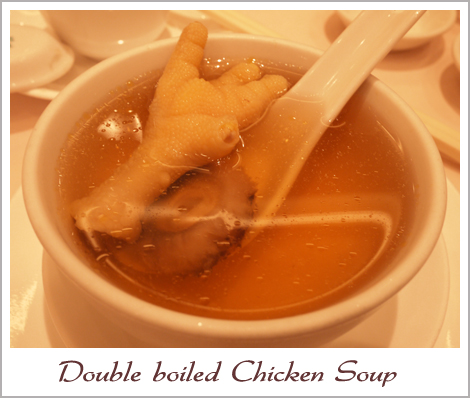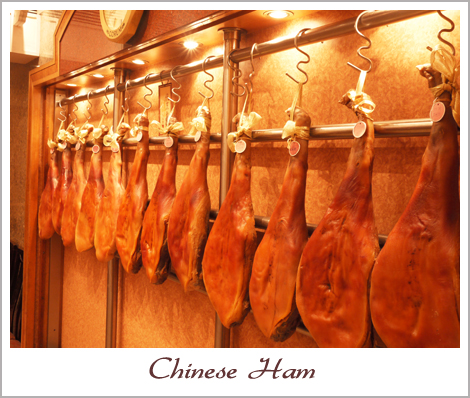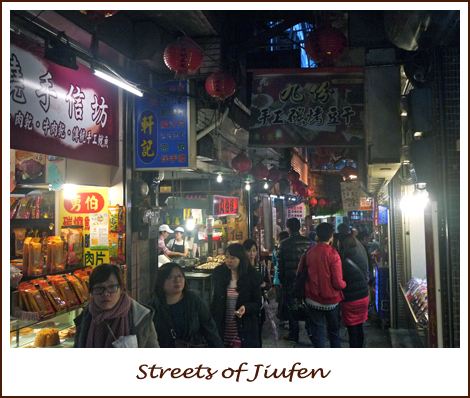 When I mentioned that I was visiting Taipei, one of the first recommendation from my friends were “you must visit Jiufen”. 九份 (Jiufen), according to our driver, got its name from the original nine households living in that area. Some time ago, there were only nine households living in the hill. Whenever someone went down the hill to buy something, he always buys nine servings/sets for each of the households. 九份 means nine servings in Chinese!
When I mentioned that I was visiting Taipei, one of the first recommendation from my friends were “you must visit Jiufen”. 九份 (Jiufen), according to our driver, got its name from the original nine households living in that area. Some time ago, there were only nine households living in the hill. Whenever someone went down the hill to buy something, he always buys nine servings/sets for each of the households. 九份 means nine servings in Chinese!
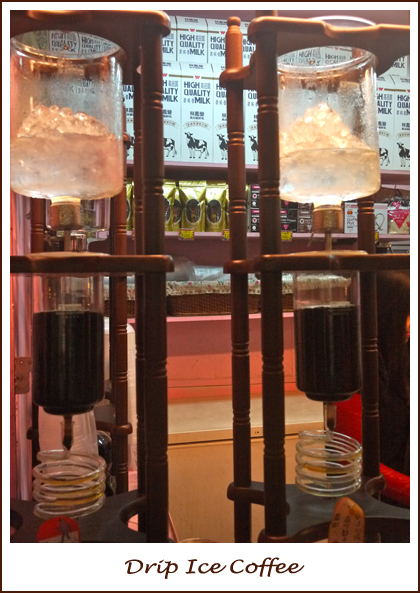 Jiufen is this really interesting place atop a hill and it seems like an endless winding maze of shops on both sides. Stalls sell food, drinks, trinkets, accessories and so on. I was initially worries that we will get lost in that “maze” but it basically leads out to an open area where you can enjoy the nice view. One of the first stalls that greeted my thirsty husband was this drip coffee stall. When the ice melts, the ice cold water drips into the coffee powder and the coffee formed is collected below. This way, it’s ice coffee without the ice, and the coffee does not get diluted.
Jiufen is this really interesting place atop a hill and it seems like an endless winding maze of shops on both sides. Stalls sell food, drinks, trinkets, accessories and so on. I was initially worries that we will get lost in that “maze” but it basically leads out to an open area where you can enjoy the nice view. One of the first stalls that greeted my thirsty husband was this drip coffee stall. When the ice melts, the ice cold water drips into the coffee powder and the coffee formed is collected below. This way, it’s ice coffee without the ice, and the coffee does not get diluted.
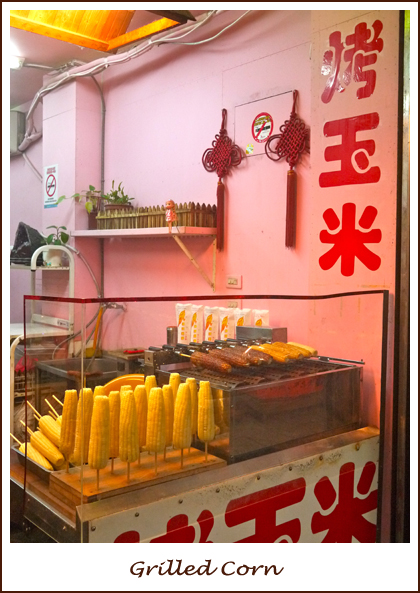 These stalls selling grilled corn are aplenty in the night markets as well. Some stalls grill it as shown in the pictures and others put their corn in little roasting holes. The original flavour (the brown corn in the picture) is a mixture of butter, caramel, peppery sauce (or what tastes like it) and sesame seeds. The corn goes through each coating and is returned to the grill in between coats. The result is a rather chewy corn that may seem interesting to some; I would prefer the corn just basted with butter.
These stalls selling grilled corn are aplenty in the night markets as well. Some stalls grill it as shown in the pictures and others put their corn in little roasting holes. The original flavour (the brown corn in the picture) is a mixture of butter, caramel, peppery sauce (or what tastes like it) and sesame seeds. The corn goes through each coating and is returned to the grill in between coats. The result is a rather chewy corn that may seem interesting to some; I would prefer the corn just basted with butter.
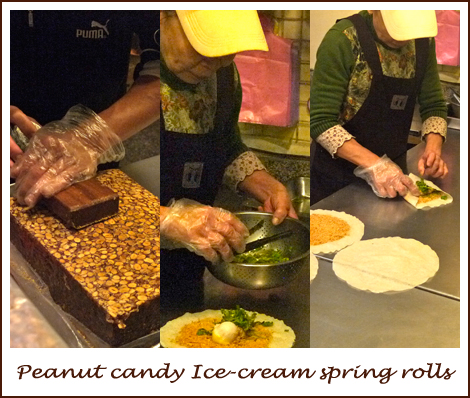 This popiah look-a-like snack is really unique. This stall that we saw was run by an old couple. The old uncle uses this wooden device to grind the peanut candy block. He then pours the ground peanut candy onto a popiah skin. His wife tops the peanut candy with two scoops of vanilla ice cream and some chopped spring onion. Yes you read and saw it right, that IS spring onion. She then rolls it up like a popiah. The taste is unlike anything I have tasted before. It is sweet no doubt, considering the peanut candy and the ice-cream but the addition of the spring onion changes the taste significantly. It adds a touch of savouriness, freshness and even spice. The texture of this snack adds to the enjoyment of it – the softness of the popiah skin contrasting with the crunch of the peanut candy and the melt in your mouth ice-cream. I really enjoyed it. Do you think this would be a hit if someone brought it to Singapore?
This popiah look-a-like snack is really unique. This stall that we saw was run by an old couple. The old uncle uses this wooden device to grind the peanut candy block. He then pours the ground peanut candy onto a popiah skin. His wife tops the peanut candy with two scoops of vanilla ice cream and some chopped spring onion. Yes you read and saw it right, that IS spring onion. She then rolls it up like a popiah. The taste is unlike anything I have tasted before. It is sweet no doubt, considering the peanut candy and the ice-cream but the addition of the spring onion changes the taste significantly. It adds a touch of savouriness, freshness and even spice. The texture of this snack adds to the enjoyment of it – the softness of the popiah skin contrasting with the crunch of the peanut candy and the melt in your mouth ice-cream. I really enjoyed it. Do you think this would be a hit if someone brought it to Singapore?
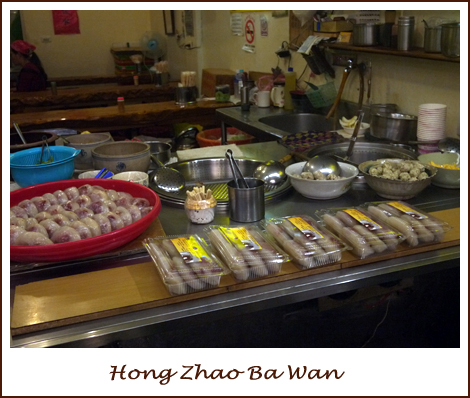 We went past numerous stalls selling Hong Zhao Ba Wan. Apparently it’s pork marinated in red wine wrapped in glutinous rice skin. We were too full and didn’t try any. The other reason was also that we did not know which stall to try from! There were so many stalls claiming to be the best or the most original!
We went past numerous stalls selling Hong Zhao Ba Wan. Apparently it’s pork marinated in red wine wrapped in glutinous rice skin. We were too full and didn’t try any. The other reason was also that we did not know which stall to try from! There were so many stalls claiming to be the best or the most original!
All in all, we had fun at Jiufen. Ate some snails, bought a couple of ocarinas, trotted around in umbrellas (it was raining) and enjoyed the cool weather. I will be back. 🙂
